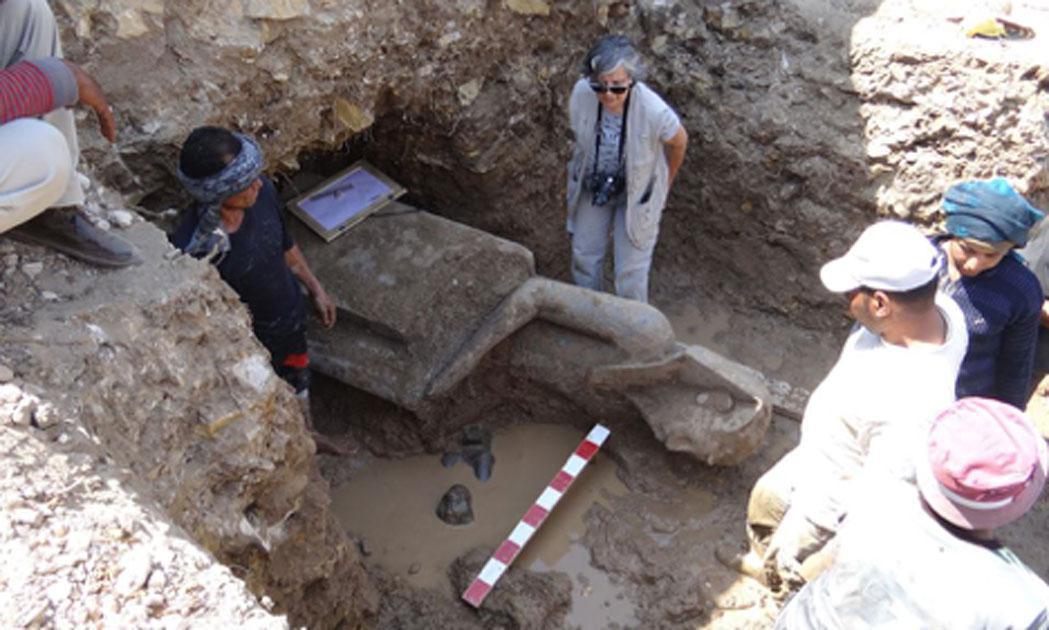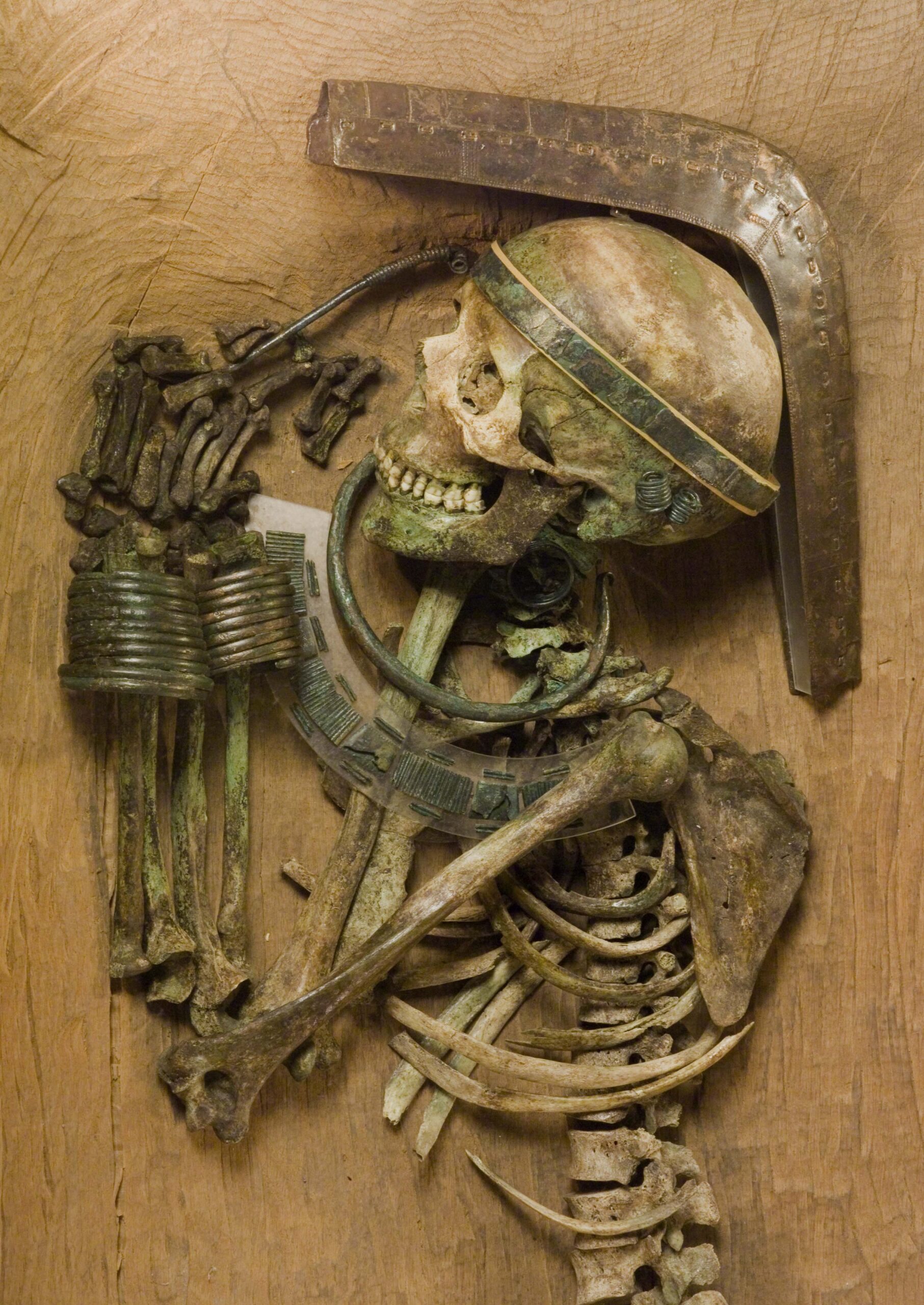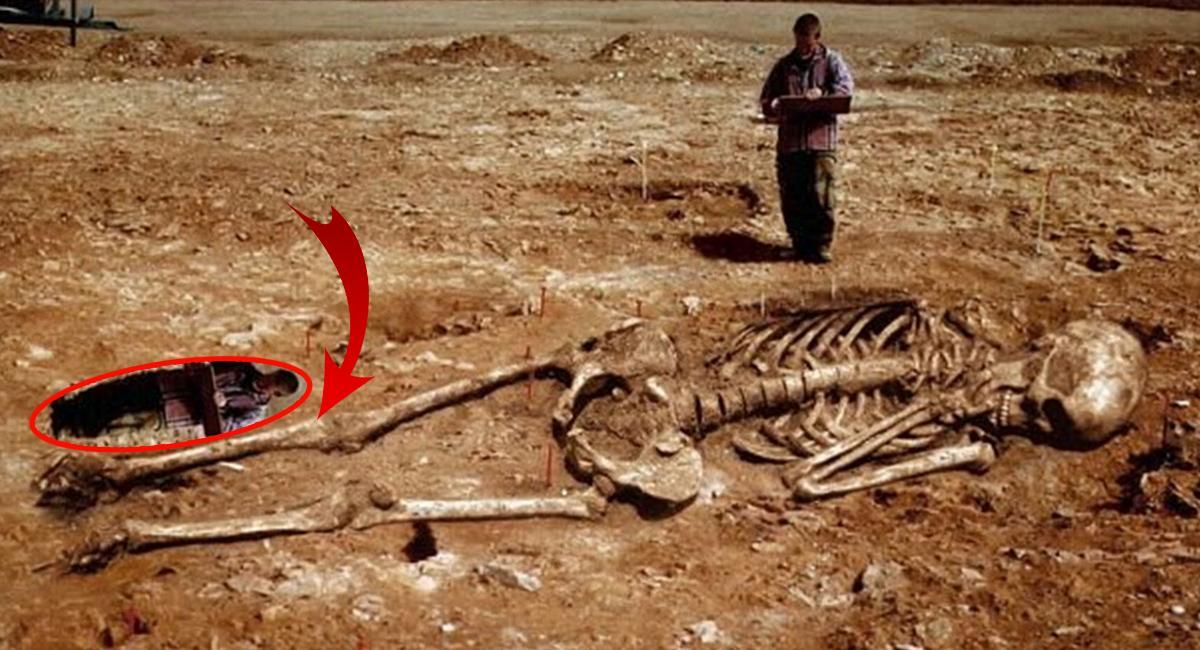Many archaeological secrets exist in forests and mountains. Archaeologists can use imaging drones to capture sites from the air in hard-to-get areas. Sometimes, researchers know of a site’s existence, but the place has not yet been adequately documented, like the recent find in Germany.
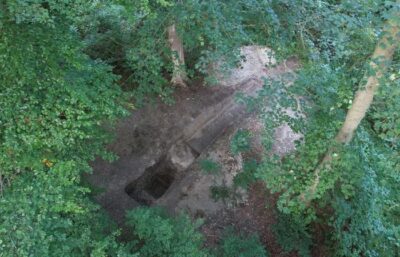
Drone image of the excavation trench sectioning rampart and ditch. Credit: R. Kunze State Office for Heritage Management and Archaeology Saxony-Anhalt
Archaeologists report they have made an extraordinary discovery, unearthing the remains of a mysterious deserted Medieval village near Harzgerode. Scientists also found a small, oval hill fort that could be described as a castle of the local lower nobility.
Within a two-week excavation campaign this year, the castle with its ditch and rampart in front of it was intensively examined. The excavation team was able to document well over 2,000 finds in total, including horseshoes, iron nails, roof tiles, and numerous pottery fragments.
In the Lower Harz, almost 200 medieval deserted villages are known from typical surface finds on historical maps or can be identified in digital terrain models. Very few of these sites have been intensively investigated archaeologically. Questions about the beginning of regular medieval settlement in the Lower Harz or the economic basis of individual settlements have, therefore, remained mainly unanswered.
The assumed important role of mining in the region’s settlement has so far suppressed other interpretations, such as agricultural land use. New investigations in a small deserted village near Harzgerode – now in the middle of the dense forest – will help answer these questions.
A Deserted Village Near Harzgerode
The excavated “row village” is located on both sides of a small stream valley and made up of regularly arranged farm plots. Some of these plots have clear house pits in the front area facing the stream. In the north-eastern settlement area, possibly on a double or oversized plot, there is a small, oval hill fort measuring around 45 x 60 m, which can be described as a castle of the local lower nobility. Studies on local history identify the site as a village that appears in written sources starting from 1216. The village is said to have fallen into desolation between 1488 and 1562 at the latest.
The research project, which started last year, is a cooperation between the State Office for Heritage Management and Archaeology Saxony-Anhalt and the Georg-August University of Göttingen. Students and volunteers participate in the research.
The archaeological monument is exceptionally well preserved, meaning that finds and features can be easily identified, scientists inform in a press release. In addition, the moist environment of the site (due to its location on the stream) suggests the presence of preserved organic materials. Ridge and furrows surrounding the area and possible hortisols (intensively used garden soils) provide evidence of agricultural activities. The parallel existence of a rural settlement structure and a lower nobility seat offers another promising starting point for archaeological investigations.
Earlier Investigations
A first survey in spring 2022 revealed over 400 individual finds – in addition to the typical settlement ceramics from the 13th to 14th centuries, numerous objects from a stately context, such as spurs and chapes were outstanding finds. There are also silver coins and multiple iron objects. Horseshoes of various designs continue to demonstrate intensive use of the site far beyond the end of the village.
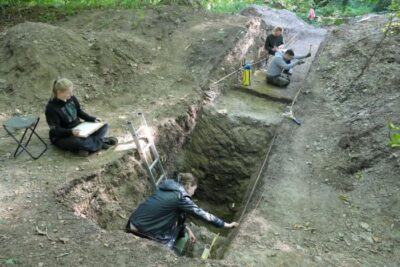
Documentation work in the area of the rampart and ditch. Credit: A. Swieder, State Office for Heritage Management and Archaeology Saxony-Anhalt
A first excavation campaign followed in autumn 2022, during which five excavation trenches were opened. Parts of the external fortifications and the remains of the building’s foundations were recorded. This campaign uncovered several thousand finds, including roofing slates and green-glazed roof tiles. The latter are unique because they are very rare in rural contexts and had a high representative value.
Excavations in 2023
In a two-week excavation campaign, two LDA staff members, nine students from the University of Göttingen, and seven volunteers were able to examine four excavation sections with a total size of approximately 50 m2. The largest of these trenches cut through the castle’s ditch and the rampart in front of it, creating a profile over 12 m long. The ditch was dug approximately 2 m deep into the existing slate rock.
The excavation team documented well over 2,000 finds, including two iron crossbow bolts, numerous fragments of horseshoes, iron nails, glazed and unglazed roof tiles, roof slates, and multiple fragments of pottery. Most of this year’s finds, like the pieces from the 2022 campaign, belong to the 13th to 14th centuries. A small part of the finds indicates that settlement began on site in the 11th century. A chronological outlier – perhaps a witness to the area being reused after the settlement was abandoned – is a silver coin from 1560.
